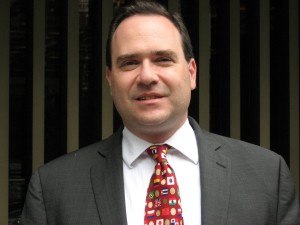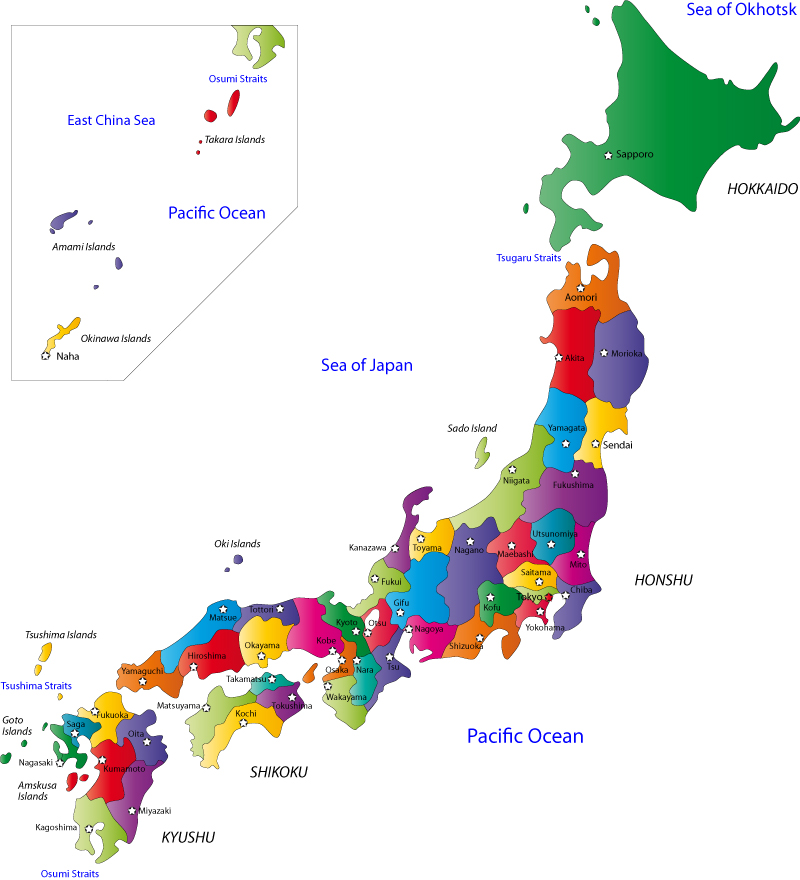Justin’s Japan: Q&A with Grammy Award-Winning Musician Hiromi on ‘Voice’

"I went back to Japan right after the earthquake and did a lot of live radio and TV shows to perform live to cheer people up. I just wanted to do something for the country I love and only thing I could do was keep playing music, so I kept playing." (Sakiko Nomura)
By JQ magazine editor Justin Tedaldi (CIR Kobe-shi, 2001-02) for Examiner.com. Visit his page here for related stories.
A native of Hamamatsu, Shizuoka, pianist and composer Hiromi Uehara is one of the world’s top young international performers in jazz, winning a Grammy earlier this year for her work on Stanley Clarke’s most recent album. Today (June 7), she releases Voice, her seventh studio effort since 2003 and first as part of the Trio Project with bassist Anthony Jackson (Paul Simon, the O’Jays, Steely Dan, Chick Corea) and drummer Simon Phillips (the Who, Judas Priest, David Gilmour, Jack Bruce).
“When I play music, I realize that it really filters emotions,” says Hiromi. “I called this album Voice because I believe that people’s real voices are expressed in their emotions.” Tonight, the Berklee College of Music alum launches a six-night residency at New York City’s venerable Blue Note Jazz Club as part of its inaugural Blue Note Jazz Festival. I caught up with the artist in this exclusive interview.
What kinds of goals in mind do you have when you record a new album? How about for a concert?
Making an album is like I have stories to tell; I want to see the landscape in music that I have never seen before. For a concert, I always think today is my first and last, trying to put everything I have out.
A big part of your style is your quicksilver runs across the keys. How did you develop this as your trademark, and are there ever times in concert when you feel like it’s a challenge to keep up that manic pace?
I never really thought about it as my trademark, I just play what I hear, what I have to say at that very moment, just like a conversation.
The toughest part of your job onstage that the audience might not realize is…
Definitely traveling.
I’ve noticed that you’ve been speaking a lot more English for interviews and at your concerts. Are you continuing to study it, and what kind of methods or techniques do you use that you can recommend to others who are learning a second language?
I do watch a lot of movies in English. Don’t be afraid to make mistakes, speak speak speak!
In what ways has the Japanese music community banded together in the wake of the earthquake and tsunami devastation? What has your impression been of the United States and its entertainers’ relief efforts?
I went back to Japan right after the earthquake and did a lot of live radio and TV shows to perform live to cheer people up. I also went back in April to do eighteen benefit shows in Tokyo. I just wanted to do something for the country I love and only thing I could do was keep playing music, so I kept playing. I really would like to thank everyone from the U.S. for their efforts. We surely need continuous support and I will keep doing whatever I can do.
For the rest of the interview, click here.
JETAA Chapter Beat 6.6.11
Jonathan Trace (Fukuoka-ken, 2005-08) takes us on a walk around the JET Alumni community for another edition of JETAA Chapter Beat.
- JET Alumni Author Panel – Friday, 10th, 6:30 to 8:00 at the Barnes and Thornburg, LLP. JETAA and the Japan American Society of Chicago are hosting a panel featuring Lars Martinson, D.H. Cermeno and Jamese Kennedy.
- Monthly Executive Board Meeting – Monday, June 13th, 6:30. Drop by for a friendly dinner and talk about the shape of what’s to come for Chicago JETAA.
- Summer Beach Volleyball – Tuesdays, from 6:30 to 7:30 starting June 14th. Chicago JETAA is fielding a beach volleyball team, the Jet Setters, in this year’s Players Sports Group Summer Beach Volleyball Leagues. All skill levels are welcome, so join the team.
- Winter Matsuri in Swan Valley – Sunday, June 26th, 10:00 to 5:00, bus departing from Barrack Street Jetty. The trip includes a trip to 2 wineries with tastings, a nougat factory with tasting, a chocolate factory and a brewery.
- Tampa New JET Welcome Party – Saturday, June 18th, 7:00 at Tampa Karaoke. Get to know the new generation over a song or three.
- Kyushu Happy Hour – Wednesday, June 8th, 6:30 at Nightengale Lounge. This month’s happy hour has a Kyushu theme, so all those who lived/traveled or enjoyed Kyushu are welcomed to attend and meet alums and members of the Kyushu Battenkai.
- Book Club – Tuesday, June 14th, 7:00 at the Flatiron Building. This month’s selection is The Woman on the Other Shore by Mitsuko Kakuta.
- Quarterly Meeting – Wednesday, June 15th, 6:30 at the Japan Local Government Center. Come discussion the upcoming pre-departure orientation and upcoming summer events, as well as other opportunities for those looking to get involved.
- O-Shaberikai – Wednesday, June 8th, 6:00 at Coo Izakaya in Civic. Join in and meet Japanese people living in Canberra and other locals interested in Japan.
- 2011 JET Orientation Happy Hour – Saturday, June 11th, 5:30 at Lucky’s Lounge. Come meet the new crop of JETs over a drink and share your stories and experiences.
- Walk for Rice – Saturday, June 18th, 8:00 at Seattle’s Seward Park. Walk for rice is a charity 2.5 mile walk/run to raise money and awareness about hunger in King County. Join the PNW JET Program Alumni team and do your part.
- Tabemashou Dinner – Tuesday, June 14th, 6:00 at UCHU Sushi & Fried Chicken. Tabemashou group is a group that explores, critiques and enjoys Japanese dining in Portland.
What happened at your chapter’s event? If you attend(ed) any of these exciting events, JetWit would love to hear about them. Just contact Jonathan Trace with any info, stories or comments.
Monkey Majik JET alum rocker and Ambassador Fried deliver Canadian beef to Tagajo, Miyagi
Thanks to JETAA Ottawa President Lisa Malin for sharing this:
Brief English summary of Japanese article below:
Canada’s Ambassador to Japan Jonathan T. Fried delivered a load of Canadian beef to Tagajo City, Miyagi Prefecture along with Maynard Plant (Aomori-ken, 1997-2000) and one other member of Monkey Majik (a four-person Canadian-Japanese band based in Sendai and Tagajo). The beef was served atop locally grown Hitomebore rice to make steeki-don for 1,000 people living in shelters in Tagajo. The Ambassador’s aim was to help residents get their strength back after everything they’ve been through, and it appears to have been the first meat many had enjoyed for quite awhile.
***********
(Japanese article)
宮城〕
| カナダ牛でステーキ丼 駐日大使ら炊き出し 多賀城
カナダ牛のステーキで元気になってもらおうと、駐日カナダ大使と音楽グループ「MONKEY MAJIK」のメンバーらが2日、多賀城市内2か所の避難所でステーキ丼の炊き出しを行った。 同グループはカナダ人と日本人の4人組。仙台市を拠点に活動しているが、デビュー前は多賀城市が活動の中心だった。 震災後は各地でボランティア活動を続けながら、カナダ大使館に支援を呼びかけると、4月にはジョナサン・フリード大使が多賀城市に避難物資を届け、今回の支援を約束した。 大使館は「力のつく温かいものを食べてもらいたい」と、県産米「ひとめぼれ」の上にカナダ牛を豪快に盛りつけた 1000食分のステーキ丼を用意。避難所が置かれた市文化センターと市総合体育館では、フリード大使が「お元気ですか」と声をかけながら、被災者にステー キ丼を手渡した。 2歳の長男とステーキをほおばった同市桜木、無職佐藤深雪さん(33)は「肉を食べたのは本当に久しぶり。柔らかくておいしかった」と顔をほころばせた。 (2011年6月3日 読売新聞) |

"I think it’s a gift to experience living in another culture, and if everyone in the world could have the chance to live in another country for a time, the world would probably be a better place." (Photo courtesy of the author)
By JQ magazine editor Justin Tedaldi (CIR Kobe-shi, 2001-02) for Examiner.com. Visit his page here for related stories.
A “certified mad Japanophile,” San Francisco-born and bred writer Wendy Nelson Tokunaga has lived her whole life in the Bay Area, save for a stint in Tokyo in the 1980s after winning a songwriting contest sponsored by Japan Victor Records. Since then, she has penned two Japan-related novels, Midori by Moonlight and Love in Translation.
Her new book, Marriage in Translation: Foreign Wife, Japanese Husband, is a series of illuminating interviews conducted by the author with Western women who talk candidly about the challenges in making cross-cultural marriages work both inside and outside Japan, and the joys and frustrations of adapting to a different culture. Tokunaga explores the theme of why some people feel the need to trade in their native culture for a new one, revealing new insights about Japan and married life. I caught up with the author in this exclusive interview.
What made you decide to write about this topic?
I’ve dated Japanese men and am now married to a Japanese born and raised in Osaka. I’ve always noticed how there are many more Western man/Japanese woman couples than the opposite. Even today, with the Internet and social media and the world shrinking, this pairing is still relatively rare and I think the reasons why are intriguing and fascinating.
The book originally started out as blog entries. When did you get the feeling that it deserved to be a book?
These series of interviews elicited a lot of interest from my blog readers and I got contacted by a couple of small publishers asking if I wanted to make it into a book.
Why did you choose to publish it as an eBook?
I’ve had experience with a traditional publisher, St. Martin’s Press, for my two novels, Midori by Moonlight and Love in Translation. I know how long it takes to get a traditional book published and I wanted to get this book out into the world while the interest was still high. I also wanted to dip my toe into the burgeoning world of eBook publishing and thought this would be a great opportunity.
The list price of $2.99 is certainly attractive. What’s your impression of the sales so far?
I think my sales have been pretty good thus far, especially when you take into consideration that I basically have only marketed this book via Twitter and by doing a bit of other online publicity. It’s a niche book for sure and I’ve also been donating 50% of the sales to Japan Relief. I certainly am not in it for the money!
You said that your husband Manabu felt he never “fit in” in Japan. Would you say this is a common trait among Japanese men who settle down outside of their home countries or cultures? Do you think this might hold less true for Americans who move to Japan?
This is another big question! I don’t have statistics to prove this, but through my own anecdotal evidence and observations over the years I have found that not many Japanese end up moving abroad permanently. There are many reasons for this. First, they don’t have the economic issues that many other immigrants face, and of course there is the tendency to feel that Japanese society is “unique” and can’t be duplicated anywhere else, so why leave?
So I would assume that for a Japanese man to move away from Japan there has to be some pretty compelling reason, especially since they also don’t tend to marry foreign women (though in Japan there are more Japanese men married to non-Japanese than Japanese women married to non-Japanese men. However, these women are usually of Asian ethnicity).
As you probably well know, an American man’s experience in Japan is often quite different. He can be seen as exotic and desirable (at least in the honeymoon stage of his stay) and even though he might undergo a lot of culture shock, things can be quite comfortable for him. Of course I have no choice but to generalize, but I have to say that the differences in experiences between an American man moving to Japan and a Japanese man moving to America couldn’t be more striking. There is nothing special about a Japanese man here in the States, but a gaijin in Japan still causes excitement to this day. On the other hand, to briefly open another topic, we certainly know of the quite different reasons why Japanese women would want to leave Japan. I explore that theme in Midori by Moonlight.
At least one of the interviewees served as a participant of Japan’s global exchange initiative, the JET Program. Tell us about the personal value of living in another country as a young adult compared with being a bit older and moving there with the intention to raise a family.
Well, for one thing a person coming to Japan on the JET Program is usually only going to be in Japan on a temporary basis and, from what I understand, the program purposely hires people who know little about Japan. So they come with no expectations and quite often leave with a wonderful experience. The Western woman coming to Japan to raise a family with her Japanese husband is in a much different situation. And I think the experience will have its differences whether she has been interested in Japanese culture all along or only came into contact with it by meeting her husband abroad. Either way, I think it’s a gift to experience living in another culture and if everyone in the world could have the chance to live in another country for a time, the world would probably be a better place.
JQ Magazine: JQ&A with JET Alum Robert A. Fish, Japan Society’s Director of Education and Lecture Programs

"I applied to the JET Program after three years of high school teaching. The Japanese public education system was held in high esteem at the time and I also felt that I could learn something from the 'gold standard' of educational systems."
By Lyle Sylvander (Yokohama-shi, 2001-02) for JQ magazine. Lyle is entering a master’s program at the School of International and Public Affairs at Columbia University (MIA 2013) and has been writing for the JET Alumni Association since 2004. He is also the goalkeeper for FC Japan, a NYC-based soccer team.
JET alumn Robert Fish (Wakayama-ken, 1996-97) joined New York’s Japan Society in May 2006 as Director of Education and Lecture Programs. Fish previously served as an Assistant Professor of East Asian history at Indiana State University, where he worked extensively with pre-service teachers. Fish earned a BA in History at Yale University, an MA in Educational Administration at New York University, and a Ph.D. in Japanese History at the University of Hawaii at Manoa.
His research focuses on the history of childhood and education in 20th century Japan, and includes a book manuscript near completion about the history of “mixed-blood” orphans in postwar Japan as well as publications regarding the history “textbook controversy” in Japan.
Tell us about your background.
I studied History at Yale University and taught World History East at my secondary school alma mater, Tenafly High School, in Bergen County, New Jersey. At that time, I didn’t have a strong knowledge base in the region and wanted to learn more about Japan, so I applied to the JET Program after three years of high school teaching. Plus, the Japanese public education system was held in high esteem at the time and I also felt that I could learn something from the “gold standard” of educational systems.
I spent one year teaching English in Wakayama and then enrolled in a Ph.D. program in Japanese History at the University of Hawaii, Manoa. After graduating, I saw two strong career possibilities. One was to go back to teaching at secondary schools, and the second was to pursue a path in academia. I chose the academic one and spent a year teaching at Michigan State University and then Indiana State University, where I was on a tenure track.
Why did you leave academia?
I enjoyed teaching, writing and doing research in Japanese history, but I felt that this opportunity allowed me to develop a real passion of mine: to help primary and secondary teachers teach Japanese history and culture.
Tell us about your current job.
The primary goal is to help teachers teach more effectively about Japan at the national level. Secondly, we help children learn directly through social networking—we promote children to children connections between the United States and Japan. Third, we introduce children to Japan through family programming.
Japan Local: Hokkaido e-newsletter
Via AJET June 2011 Newsletter:
For anyone interested in learning about Japan’s northernmost prefecture, HOKKAIDO! The Red Brick Bulletin is an electronic newsletter published by the Hokkaido Government and prepared by the prefectural English language CIR (i.e., JET). Topics range from nature to history, cuisine to tourist attractions, and much much more!
http://www.pref.hokkaido.lg.jp/ss/tsk/akarenga_eng.htm
AJET June 2011 Newsletter Highlights
Message from the Out-going Chair
Hi Everyone,
My term as AJET Chair is coming to an end on June 15th. This year National AJET has made great strides in improving the JET Programme. In December 2010 a report was given about the Tokyo Orientations, and in light of the discussions, some Tokyo Orientation workshops will be revamped to meet the ongoing needs of JETs. On May 23rd and 24th we had an opinion exchange meeting with CLAIR, MOFA, MEXT and MIC, where we presented reports about Mental Health in the JET Programme and The 2012 Teaching English in English in SHS policy. Both of the conversations were very fruitful and we are looking forward to what will come out of the conversations.
I am confident that the 2011-2012 council will do a great job and will fairly represent all of the JETs. If you have any questions or comments you can always contact the 2011-2012 Chair, Matt Cook, at chair@….
Regards,
Caroline Ideus
2010-2011 National AJET Chair
Message from the In-Coming Chair
Hello, JETs!
I’m Matthew Cook and I’m very happy to introduce myself as the Chair of AJET for the new year!
This year, we plan on helping you improve your JET experience by offering you brand new resources, such as lesson plans, more opportunities for events and networking, and promoting what JET is to Japanese communities. This year, I want to show the entire country who we are, what we do, and the differences JETs can make. How can we do this? By putting a face on JET. Let’s show them who we are. Who you are.
Looking forward to this great year with all of you!
Matthew Cook
National AJET Chair 2011-2012
What’s AJET been up to?
Wondering what National AJET’s been up to recently? We’ve been…
Having a productive dialogue with CLAIR, the Ministry of Education, Ministry of Foreign Affairs, and Ministry of Internal Affairs and Communications about the 2013 MEXT English Policy, the mental health resources available to JETs and AJET’s goals for the future. Watch ajet.net for more the full reports and a summary of the Opinion Exchange Meeting.
Getting ready for the new 2011-2012 National AJET Council to take over.
Taylor Anderson and Monty Dickson JET Community Tribute
AJET are collecting letters/postcards from the community for an online tribute to two devoted and sorely missed JETs – Taylor Anderson and Monty Dickson. Please visithttp://najettribute.blogspot.com/ to read the current post cards received.
Letters/cards can be anonymous or signed, and messages will be uploaded without editing. If you would be interested in sending messages, hopes, thoughts or wishes to either Taylor or Monty, their friends, family or the JET community at large, please send your cards or letters to Apt. 111, Haitsu Poronia, Katase 44-28-1, Katsuyama-shi, Fukui-ken, 911-0811.
Tohoku Disaster Relief
How Have You Contributed to the Earthquake/Tsunami Relief Efforts?
Send pictures with English descriptions/stories to webmaster@… and it will be published on AJET Press. Pictures can be submitted anonymously or be attributed, according to the author’s preference.
Hope Letters: Sharing hope from overseas to Japan
Hope Letters has received more than 3,000 letters of hope and support from people around the world since March 11th, 2011.
Hope Letters invites you to be a spokesperson of hope by bringing these letters, written by students for students, into your classrooms, staff rooms or common areas. You can also organize a language lesson or activity around the letters. Visit http://www.hopeletters.org
Event Page: http://www.facebook.com/event.php?eid=119256111482369
The Crane Campaign
The Crane Campaign was created immediately following the Tohoku Earthquake and Tsunami in Japan on 11 March 2011 by two British ex-ALTs from the JET Programme (1993-1995 Shizuoka-ken) and a web designer who wanted to involve local school children in the UK in raising awareness for the plight of the Japanese victims.
All the details about what to do and how to join The Crane Campaign are provided on the website, www.theCraneCampaign.com. There is also a Facebook site for providing feedback and photos and we invite you all to come and follow us on twitter (@cranecampaign).
PEPY (Protect the Earth, Protect Yourself) Tours: Adventurous Living, Responsible Giving
Want the challenge and excitement of crossing a country using your own power? The annual PEPY Ride is entering its 7th year and it promises to be as exciting as ever! This cycling adventure offers participants the opportunity to traverse Cambodia on two wheels, all the while learning about and supporting community development projects and locally run non-governmental organizations (NGOs). Each year the ride provides unparalleled opportunities to build a mobile community that will inspire its participants to learn about themselves and the role they play in the world, while raising funds and awareness to fight global poverty.
Sake World e-Newsletter by John Gauntner (June 2011)
 The June 2011 issue of the Sake World e-newsletter by JET alum and the leading non-Japanese sake expert in the world, John Gauntner (a.k.a. “The Sake Guy”), is now available online.
The June 2011 issue of the Sake World e-newsletter by JET alum and the leading non-Japanese sake expert in the world, John Gauntner (a.k.a. “The Sake Guy”), is now available online.
Go to John’s Sake World website for more information as well: www.sake-world.com
Job: Japan-America Society Corporation Job Fair in Bellevue, Tuesday 6/7
via Pacific Northwest JETAA. Posted by Dipika Soni (Ishikawa-ken, 2003-06). Dipika has recently moved back to London as is currently looking for new work opportunities related to Japan, translation, or other fields. She is also the former vocalist for the Japanese hardcore punk band DEGRADE.
*Note: If you apply for this position, please let them know you learned of it from JETwit. Thanks.
———————————————————————————————————————————-
Not your mother’s job fair!
Come to Bellevue City Hall on Tuesday, June 7 to meet Japan-America Society Corporate Member Representatives to learn what they seek when hiring employees to work in their international departments with responsibilities for the Asian market, especially Japan.
Japan Local: JET blog on Aomori sightseeing
Here’s a really nice JET blog on sight seeing in the Tsugaru region of Aomori by Aomori JETs Emma Sayers, Mike Moses and Kelly Isom:
Let’s Go Tsugaru: http://letsgotsugaru.blogspot.com.
*If you’re aware of any other JET blogs about sightseeing and tourism in Japan, please let us know at jetwit [at] jetwit.com. Yoroshiku.
Local Japan: Prefecture Tourism Links
Here are the results of the “Local Japan Prefecture Tourism Websites Project.”
 Reminder: One of the purposes of the project is to help increase the “Return on JET-vestment” for Japan by helping to promote tourism to Japan, especially to more local and regional areas. JETwit also intends to use this list so it can hyperlink to prefectures when mentioned in future JETwit posts. (e.g., “Steven Horowitz (Aichi-ken, Kariya-shi, 1992-94)”)
Reminder: One of the purposes of the project is to help increase the “Return on JET-vestment” for Japan by helping to promote tourism to Japan, especially to more local and regional areas. JETwit also intends to use this list so it can hyperlink to prefectures when mentioned in future JETwit posts. (e.g., “Steven Horowitz (Aichi-ken, Kariya-shi, 1992-94)”)
How you can help further:
- Build the list: If you’re aware of any additional links that might be helpful–e.g., a blog (especially by JETs) or sites for a region or a city or a town–feel free to post in the comments section or e-mail to jetwit [at] jetwit.com and I’ll add them to the appropriate section.
- Tell readers one reason why someone should visit your (former) region/prefecture/city
*Note: Where prefectures didn’t have their own tourism website or English language info guide, I’ve used the Japan National Tourist Organization’s (JNTO) reference page for that prefecture.
Regional Tourism Sites:
- Tohoku: Tohoku Tourism Promotion Organization http://www.tohokukanko.jp/english/
- Shikoku: TOURISM SHIKOKU http://www.tourismshikoku.org/
- Kyushu: http://www.kyushu-tourist.com
Prefecture Tourism Sites
Aichi
- http://www.jnto.go.jp/eng/location/regional/aichi/index.html
- Kariya City – http://www.city.kariya.lg.jp/wwwe_data/index.html (Steven Horowitz, Aichi-ken, Kariya-shi, 1992-94)
Akita
Aomori
- http://www.pref.aomori.lg.jp/foreigners/sightseeing.html
- http://www.jnto.go.jp/eng/location/regional/aomori/index.html
- http://wikitravel.org/en/Aomori
- JET blog about sight seeing in the Tsugaru region of Aomori by Aomori JETs Emma Sayers, Mike Moses and Kelly Isom: http://letsgotsugaru.blogspot.com.
- Towada and Beyond http://towada-city.blogspot.
com – Thanks to JET alum Mel Tee (Aomori-ken, Towada-shi), who still works for Towada, for sharing this. - http://www.en-aomori.com/ is another good Aomori sightseeing website in English (also has Japanese, Chinese, and Korean versions) – Thanks to Mel Tee for sharing this one as well.
- http://melt-in-japan.blogspot.com/ – And this is a blog by Mel about life in Aomori!
Chiba
Read More
Job: CSI seeks bilingual location support professional (Nagoya)
Via JET alum Roy Harrison of the JETAA Bluegrass subchapter:
Another job listing from CSI, a JET alum-run company based in Kentucky. (See previousJETwit post about CSI.)
Bilingual Location Support Professional
We’re looking for a full-time bilingual location service professional with a great attitude, in-depth knowledge of office procedures, dogged persistence, expert communication skills, and the utmost discretion. From Japanese language instruction to supporting ex-pats living in the Nagoya/Toyota area, our ideal candidate will be committed to doing whatever it takes to make sure clients are successful abroad. As a facilitator of efficient and productive communication, you should be able to work both independently and as part of a team.
You’ll need a hands-on understanding of Nagoya/Toyota in order to provide the highest quality assistance. Some experience in negotiating real estate terms in Japan is beneficial. You need to be proficient in typical office software packages, have proven strong organizational skills, and be enthusiastic about working across cultural boundaries. The successful candidate will be working in a fast-paced environment with a varied workload, so we need a quick learner and great communicator who works well under pressure while being able to discern the forest from the trees.
If you’re a consummate professional with a passion for communication and a love of challenges, come join our successful team. Send a cover letter and résumé to hr@csi-ky.com.
Consultant Solutions, Inc. is an Equal Opportunity Employer. We will provide training and a support network. We will also consider relocation and/or visa support for the right candidate.
JETAA USA seeks Web Content Editor (volunteer)
Via JETAA USA:
JETAA USA is looking for an enthusiastic volunteer web content editor to help on some short and long term-projects.
With the roll-out of the new JETAA USA website at last year’s National Conference, our goal is to improve the website so that it becomes a central hub and resource which will serve all US Chapters.
Our wish list is:
● Migrate any information from other online platforms we have previously used, organize it, and make it available on the US website; in a sense- creating a virtual file cabinet for storing resources and documents.
● Create ideas for installing new resource sections, and improvements on what we’ve currently got established (such as a current national projects section and conference section).
We expect the bulk of the workload to be in the next 3 months as we jump start this, upload content, push forward with the JETAA USA Earthquake Fund and bracket the National Conference. After that time period, we anticipate the workload to decrease to ongoing maintenance, occasional projects and helping Country Representatives (CRs) to trouble shoot any potential issues with the website on an “as needed” basis. We would like this position to be an integrated part of the JETAA USA national team.
The workload of this position will vary depending on the time of year and the level of experience of the web editor. Although this is a volunteer position we would like someone who is willing to dedicate their time and be accountable for project completion. The US CRs will work with the web editor at a pace that is comfortable and reasonable, but also impactful.
We are looking for an applicant who:
● Has experience troubleshooting and responding to organizational needs and has previously managed content.
● Knowledge of WordPress, HTML, CSS, and/ or Java is a plus!
● Has a proven track record and experience with web related projects.
● Experience working with JET affiliated organizations (i.e. JETAA, AJET) is beneficial.
● Is a JET Program alumnus.
If you’re interested, please contact any (or all) of us with a brief description of your experience and desire to be a part of the team. Thank you!
- us1.jetaausa@gmail.com (Mike Shu)
- us2.jetaausa@gmail.com (Megan Miller-Yoo)
- us3.jetaausa@gmail.com (Jessyca Wilcox)
WIT Life #170: Super Cool Biz
WITLife is a periodic series written by professional Writer/Interpreter/Translator Stacy Smith (Kumamoto-ken CIR, 2000-03). She starts her day by watching Fujisankei’s newscast in Japanese, and here she shares some of the interesting tidbits and trends together with her own observations.
Newspaper articles from this week have highlighted Japan’s handling of energy challenges in the wake of the earthquake and tsunami, and subsequently damaged nuclear power plants. The first from the Wall Street Journal talks about the development of a new summer style called “Super Cool Biz” in response to a government decree to conserve electricity (節電 or setsuden) by 15%, or setting workplace temperatures to 82 degrees!
This new effort builds on the previous “cool biz” campaign, but takes it a step further by Read More
Shimane JETs Raise Over $21,000 USD for Tohoku Disaster Relief
From the JETAA USA website originally posted by JETAA USA Country Rep Jessyca Wilcox:
 Shimane JETs Raise Over $21,000 USD for Tohoku Disaster Relief
Shimane JETs Raise Over $21,000 USD for Tohoku Disaster Relief
Shimane AJET gathered their local ALTs, CIRs and Japanese community members to join together for a charity hike. On May 15th over 60 ALTs and CIRs and 50 Japanese people took part in a sponsored “Charity Hike.”
The hike took place on Shimane’s highest mountain: Mt. Sanbe in Oda City, Shimane. It was attended by people from 14 countries: America, Ireland, France, England, Jamaica, Canada, Scotland, Kenya, China, Korea, Japan, Australia, New Zealand and South Africa.
In the weeks leading up the event particpants raised $21,023 USD (¥1,715,338) from local and international donations (via the internet). At the summit of Mt. Sanbe, the participants held a photo opportunity and called out a strong message of support for the people of Tohoku and Japan from the international community. Please see the photograph below.
In the week after the event, the money was transferred to the Japanese Red Cross (70%) and “SMILE and Dreams: Tohoku Kids Project” (30%).
Lauren Hale, a Shimane JET from Denver, CO said, “Japan has been such a great home to us all and we were so glad that we could be a part of the relief effort. We raised over twice the amount that we had originally hoped for!”
Check out the project website for video coverage and photos: www.sanbehike.com
*Shimane JET alums (and anyone else), please don’t hesitate to post words of support for the terrific work of Shimane AJET and all involved in the comments section below.




